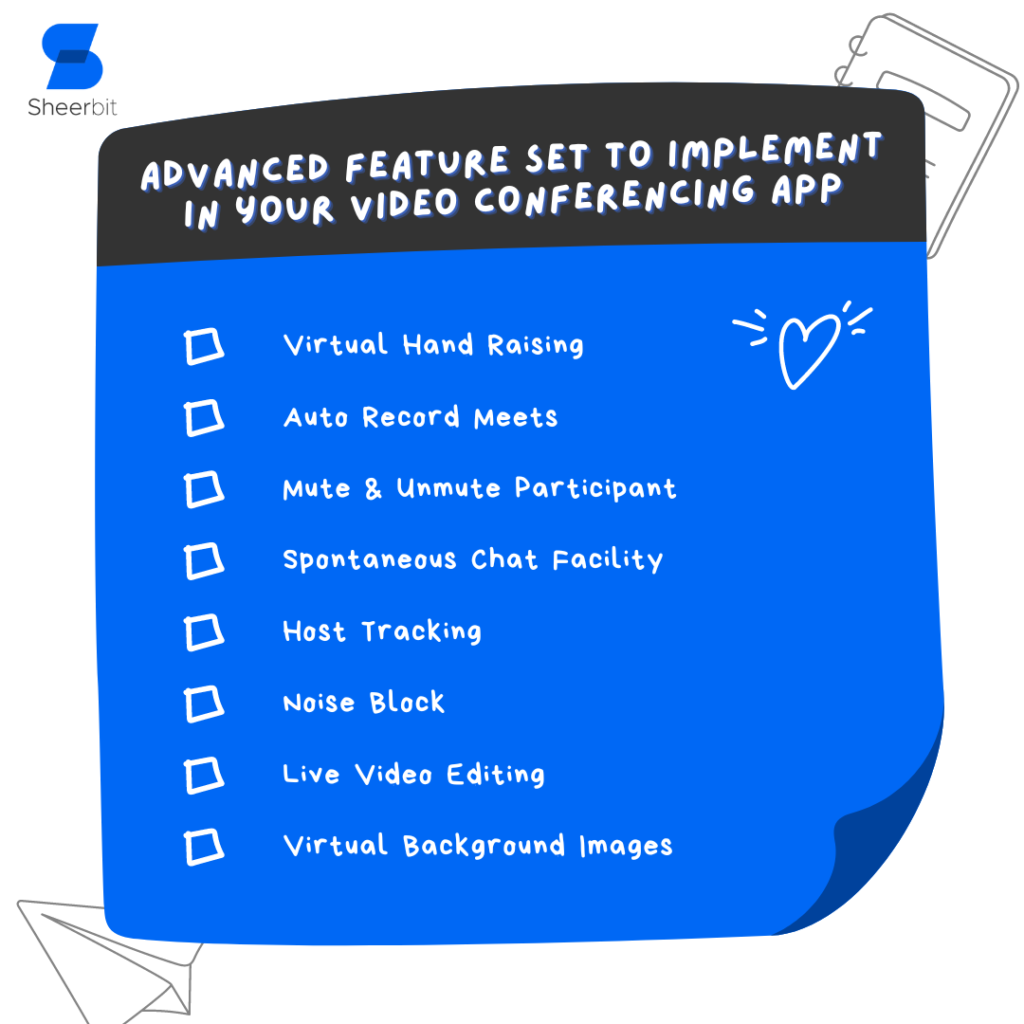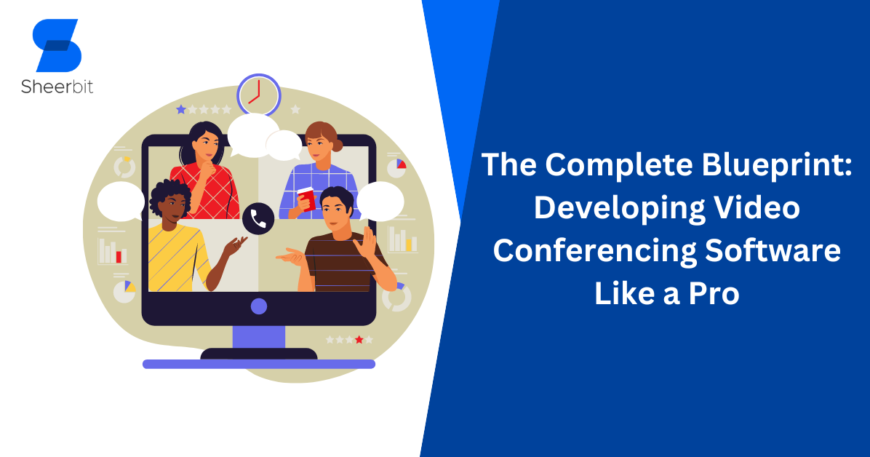Video Conferencing Software Development plays a function beyond practicality in today’s environment of distant work and virtual collaboration; it represents the core of modern communication. These platforms are essential for smooth team communications, enabling connection across time zones and geographic barriers. Video conferencing has been smoothly incorporated into the operations of organizations, whether it is used to facilitate client meetings, brainstorming sessions, or everyday stand-up meetings. Furthermore, conferencing software-powered webinars and virtual classrooms have democratized learning in education and professional development by providing unmatched access to information and skills. With the increasing adoption of remote working practices, there is a growing need for creative conferencing solutions. This creates a unique opportunity for anyone interested in software development.
Learning about the creation of conferencing software reveals a complex process focusing on user-centric design and technological nuances. Designing an interface that combines intuitive design and usefulness is a challenging task that goes beyond the appeal of seamless communication. Detailed attention to detail is necessary for every development aspect, from the architecture supporting real-time interactions to the security mechanisms protecting critical data. Developers tread this fine line between creativity and pragmatism, using state-of-the-art technology and market intelligence to create solutions that go above and beyond. Thus, achieving greatness is more than just a goal for individuals starting this journey; it’s a constant dedication to influencing virtual cooperation’s direction.

Understanding the Landscape
It’s essential to thoroughly grasp the video conferencing market before beginning development. Here are some critical things to think about:
1. Market Trends and Dynamics:
To get insight into the changing needs of the industry, research current market trends, identify rivals, and examine consumer preferences.
2. User Expectations and Pain Points:
Recognize the demands and problems that your target market faces. What characteristics are they seeking? What problems do they have with the current solutions?
3. Regulatory and Security Considerations:
To guarantee compliance and foster user trust in data privacy and security, stay current on regulatory regulations and security standards.
The Development Process: In Depth
Several complex phases are involved in developing video Conferencing Software Development, and each is essential to the success of the finished product. Let’s examine each phase in more depth:
1. Requirement Analysis and Planning:
- Conduct in-depth market research and collect requirements from relevant parties to determine the project’s scope.
- Sort features according to their technological viability and user needs.
- Make a thorough project plan that includes deadlines, goals, and the distribution of resources.
2. Choosing the Right Technology Stack:
- The performance and scalability of your software greatly depend on the choice of technology stack.
- Consider elements like cloud infrastructure, programming languages, frameworks, and real-time communication protocols like WebRTC.
3. Designing the User Experience (UX):
- When it comes to conference software, user experience is crucial. Provide an easy-to-use interface that enables consumers to access functions and navigate easily.
- Use responsive design principles to ensure that your work will work on various screens and devices.
4. Implementing Core Features:
- Consider critical features like screen sharing, chat functionality, recording capabilities, and video/audio calling.
- To improve user experience, investigate cutting-edge features like breakaway rooms, virtual backdrops, and AI-powered transcription and translation services.
5. Ensuring Security and Privacy:
- Put strong security measures like access restrictions, secure authentication, and end-to-end encryption.
- To find and stop such attacks before they happen, do routine security audits and vulnerability assessments.
6. Performance Optimization and Testing:
- Reduce latency and maximize network bandwidth used to provide a fluid and uninterrupted conferencing experience.
- To find and fix performance bottlenecks, do extensive testing on various devices, browsers, and network configurations.
7. Deployment and Maintenance:
- To guarantee high availability and dependability, deploy the program on scalable cloud infrastructure.
- Create maintenance and monitoring procedures to quickly resolve problems and provide ongoing enhancements based on user input.
Types of Conferencing Software:
Web-Based Solutions:
Accessible through web browsers without the need to install any software.
Desktop Applications:
Users put them on their gadgets to improve functionality and performance.
Mobile Apps:
Allows access from cellphones and tablets while on the road.
Key Features to Consider:
HD Video and Audio Quality:
Make sure all audiovisual communication is clear and sharp.
Screen Sharing:
By enabling screen sharing, you encourage teamwork among participants.
Chat Functionality:
Allow text-based correspondence in addition to video conferences.
Recording and Playback:
Meetings should be recorded for playback and future reference.
Security Features:
To safeguard sensitive data, use access controls, authentication, and encryption.
Cost Considerations:
Development Costs:
Technology stack, feature complexity, and development time are some factors.
Infrastructure Costs:
Costs related to bandwidth, hosting, and scalability.
Maintenance and Support:
Ongoing expenses for customer service, issue patches, and upgrades.
Conclusion
Creating software for video conferences calls for a combination of technical know-how, user-centered design, and in-depth knowledge of market trends. Through systematic implementation, security and user experience may be prioritized, resulting in a game-changing technology that redefines virtual communication.
Are you prepared to start creating conference software that raises the bar for excellence? Contact us now to learn more about our all-inclusive development services and how we can help you realize your dream.
Contact us to find out how to work together to create a custom conferencing solution that meets your needs. Together, let’s mold the communication of the future!





